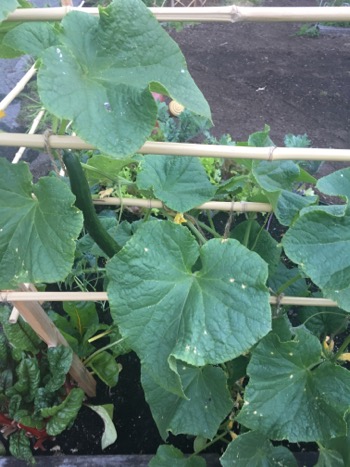Vegetable Gardening Stakes and Trellis: A Guide to Supporting Your Plants
In the world of gardening, providing structural support for your plants is essential for their growth and overall health. This is where vegetable gardening stakes and trellis come into play, serving as vital tools to help your plants thrive. Whether you're growing tomatoes, cucumbers, or climbing vines, having the right support system in place can make a significant difference in the success of your garden.
Gardening stakes are simple yet effective tools that provide support for plants that have weak stems or are prone to bending or breaking under the weight of their own foliage or fruit. Stakes come in various materials, including wood, metal, and plastic, and can be either straight or curved depending on the plant's needs. They are typically inserted into the ground near the base of the plant and tied to the stem using twine or plant ties to keep the plant upright and stable.
Trellises, on the other hand, are larger structures that are used to support climbing plants such as peas, beans, and cucumbers. Trellises can be made from a variety of materials, including wood, metal, and bamboo, and come in different shapes and sizes to accommodate various plant types and garden layouts. They provide a vertical structure for plants to climb and grow, maximizing space in the garden and allowing for better air circulation and sunlight exposure.
 Vegetable gardening stakes and trellis
Vegetable gardening stakes and trellisWhen choosing gardening stakes and trellises for your garden, consider the following factors:
1. Plant Type: Different plants have different support needs, so make sure to choose stakes and trellises that are suitable for the specific plants you are growing. For example, tall and heavy plants like tomatoes may require sturdy metal stakes, while delicate vines may do better with a lightweight bamboo trellis.
2. Garden Layout: Consider the layout of your garden and the space available when selecting stakes and trellises. Make sure they fit comfortably within the designated area and provide adequate support for your plants without overcrowding or obstructing other plants.
3. Durability: Look for stakes and trellises that are made from durable materials that can withstand the elements and last for multiple growing seasons. Investing in high-quality support structures will save you time and money in the long run.
4. Installation: Ensure that the stakes and trellises are easy to install and adjust as needed. Some trellises come with built-in hooks or clips for attaching plants, while others may require additional ties or fasteners for securing the plants in place.
Benefits of Stakes and Trellis
7 easy ideas for your vegetable gardening stakes and trellis
Teepee of bamboo poles:
Small trees such as alder will work as well. Place 3 to 8 poles in a teepee shape and tie them together at the top. These are great for pole beans.
Wire cages:
These can be purchased from hardware stores or garden centers or you can make your own by wrapping chicken wire around 3 wooden poles that have been secured in the soil. You reach through the mesh to harvest. This can be used for growing tomatoes.
String:
Stretch the string over an A-frame made with 2 by 2 inch pieces of wood. This can be use for trellising beans and peas.
Wooden frame:
Build a wooden frame to the size you will need. An old wooden window frame will work as well for a small area. Lean the frame against a wall or fence. This will make a great trellis for cucumbers or squash vines to climb.
Nylon trellis:
Nylon trellis bought at garden centres is used for large plants such as cucumbers, zucchini and squash . You wind the plant through the large 6 inch openings. This is a soft, white trellis that will not decay, is easy to wash and store. Use the same support you would for a volleyball or badminton net to hold the weight of your plants. You can toss a piece of plastic or cloth sheet over to protect your vegetables.
 Cucumbers growing
Cucumbers growing Squash staked
Squash stakedTall wooden stakes:
Secure tall poles made with 2 by 2 inch wood, bamboo or small trees into the ground so they are sturdy. You can tie up tomato plants to each pole using soft ties made from string, old pantie hose or cloth.
Green garden netting:
This is a plastic mesh with 5/8 inch by 1 1/4 inch squares. This works well for peas as their tendrils grasp this material easily. This netting can also be bought at garden centers or from some seed catalog's.
In Conclusion:
In conclusion, gardening stakes and trellises are essential tools for supporting your plants and helping them reach their full potential. By choosing the right support structures and installing them properly, you can create a healthy and productive garden that will yield bountiful harvests year after year. So next time you're planning your garden layout, don't forget to include stakes and trellises to give your plants the support they need to thrive.
Return from Vegetable Gardening Stakes to Vegetable Gardening Tips Return to homepage
Recent Articles
-
Organic Gardening soil amendments - List of material?
Aug 09, 25 10:57 AM
What materials are best used as organic gardening soil amendments? -
Tips for disease control in your vegetable garden
Jul 14, 25 11:15 AM
Easy tips for disease control to keep your vegetable growing its best. -
Joy of vegetable Gardening
Jul 14, 25 11:01 AM
Everything you need to know is right here to have Joy of Vegetable Gardening





